Updated: March 2nd, 2023
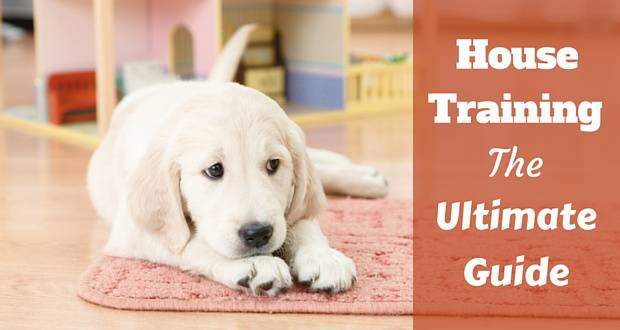
Photo Credit: © Depositphotos.com / IuriiSokolov
House training your puppy is without doubt one of the most basic and essential bits of living a happy life side-by-side with your dog.
When your new golden retriever puppy bounces into your life, they have no idea about the details of toileting. In fact, they’re more than happy to go whenever the mood strikes anywhere in your home.
They haven’t a clue about what is and isn’t acceptable, but the good news is they’re more than willing to learn.
The same may be true for an adopted older dog for whom you do not know their history.
In this article we lay out a complete plan for house training your golden retriever puppy – but the same rules and techniques can be applied to a dog of any age or breed.
The Most Important Aspects of Successful House Training
There are all kinds of methods to house train a puppy, but all of them essentially boil down to just 2 key elements. Without them, no method will ever be successful.
Prevent Any Toileting Inside Your Home.
Your first and most important job is to choose your puppy’s appropriate bathroom spot, while teaching them that it is unacceptable to use the toilet anywhere inside your home.
Any time they toilet inside the home sets your house training back a step or three. They can start to think inside is the toilet. Your goal is to NEVER let it happen, then the time house training takes will be massively reduced.
This can be seen as both an art and a science — using a combination of confinement and constant supervision, you will be one step closer to achieving your goals. The tricky part is fitting this full-time task into your current lifestyle.
Recommended Comprehensive Training Course
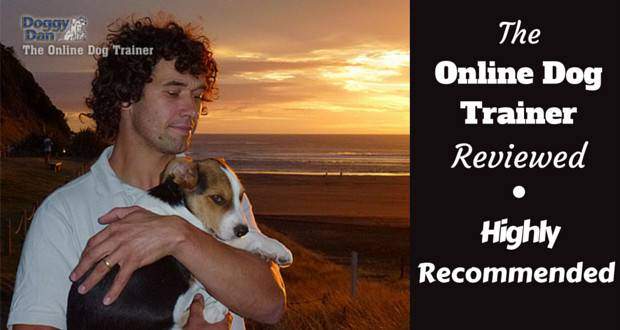
We are very happy to recommend this course, and you can find out why here:
Praise Your Puppy for Pottying in the Right Place as Often as Possible
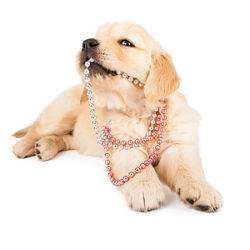
Achieving this goal is easy if you have the time. Simply take your puppy to the designated toilet spot extremely often.
When your puppy eliminates in the correct spot, you throw a party — excited praise, treats, cuddles, whatever you can think of to show your puppy that they made the correct choice.
The more chances you give your puppy to eliminate in the correct spot, the more opportunities they have to receive praise, and because they’re empty, they won’t feel the need to potty in the wrong spot.
Sound like a daunting task? Perhaps it is, but it’s also the first step you’ll take with your puppy toward mutual respect and understanding. You’re two species living side-by-side, but you are the one that makes the rules.
This comprehensive guide will walk you through all the important steps you need to take to house train your puppy.
Equipment Checklist
Most of the items in this list are basic supplies you need before bringing home your new puppy. A few of the items are specific to house training, and some are used only in certain methods. But all have the potential to help the house training process significantly
Before you buy any of the items on this list, read through the whole guide and plan your house training course of action.
Depending on the methods you choose, some items you will not need.
- Leash and collar
- A suitable crate
- A puppy play pen, baby gates, or pet barriers
- Plastic drop-cloth or tarpaulin sheet
- Puppy pads and holder – or a stack of newspapers
- Dog poop bags and a pooper scooper
- Small food treats for rewards
- Cleaning products
- A black or UV torch-light for highlighting urine
Four Methods For House Training Your Golden Retriever Puppy
There are four house training methods that are widely used and recommended for puppies.
- Paper training
- Using a dog crate
- Constant Supervision
- Umbilical cord training
Most people find that a combination of two or more methods works best. I won’t go into the specifics of each method here, but I encourage you to take some time to read up on them, so you can decide which methods might be right for your situation.
The details of each house-training method can be found in the following article:
The Best Way to House Train a Puppy: 4 Popular Methods
I Use and Recommend a Mix of the Following 3 Methods
Now that you know the basics of the four most popular house-training methods. I’ll tell you what works for me.
- Crate training. Crate training offers numerous and continuous benefits throughout the life of your dog. As a tool for house training, it enables you to prevent mistakes and promote positive experiences within your home. It also gives you and your puppy a much-needed break from the stresses of training and constant supervision.
- Constant supervision. To avoid house-training mistakes, you have to constantly watch your puppy. Why? Because just one mistake will create a major setback for your pup and it only takes seconds for them to have an accident. Little puppy mistakes can be really hard to find if you don’t notice them as they’re happening.
- Paper training. While teaching your puppy to toilet in the house may not seem like an ideal choice, I use paper training when my pups have almost no bladder control until around 8 to 10 weeks of age. It’s also useful when I have to leave my dogs home alone for longer than their bladder will allow. I always recommend avoiding paper training if possible. It makes training your pup to toilet outside harder, and it sends a confusing message to your puppy. However, if there are situations in your life where paper training might be necessary, it’s a good idea to train your puppy to use paper (or pads) while they’re still young.
Limit Your Pup’s Access to Your Home
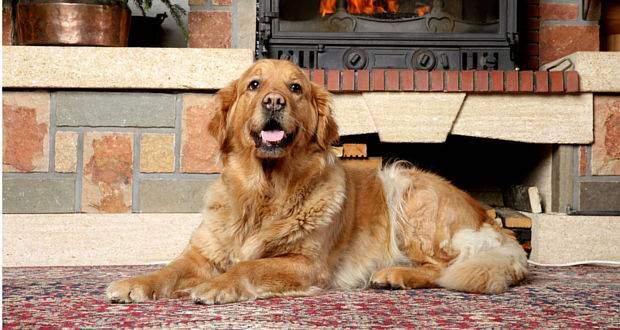
Photo Credit: © Depositphotos.com / FotoJagodka
One of the most successful ways to house train your pooch is to restrict their access to your home until they can be trusted.
They will have fewer opportunities for mistakes, which will create more positive experiences. This will allow for a faster and cleaner road to success when house training, and as an added benefit, your puppy will develop impeccable house manners a lot more quickly.
Dogs will instinctively keep their den clean.
Your task will be to convince your puppy that the entire house is their den so they won’t eliminate anywhere inside.
Start by restricting your puppy to just one room of your home. When they are reliably keeping that clean, you can slowly expand the area where your dog is allowed.
Dogs don’t generalize well, which means that even when they learn not to eliminate in the kitchen, they won’t understand that the same rules apply to your bedroom. Each part of your home is a separate place to your dog.
If you start small, and keep the whole experience positive, your puppy will eventually think of each new area as part of their living space that they’re supposed to keep clean. Not only will this speed up the house training process, but it will also reduce the number of accidents and the number of times you have to deep clean your carpets. Who can argue with that?
What and How You Feed Your Pup is Incredibly Important
Not all dog food is created equal, and what you feed your puppy is one of the most important decisions you will make regarding the care of your pup. This decision has a huge impact on house training, and the overall health of your dog.
For more information about how food and water choices affect house training, check out this detailed article:
The Role Food Plays in Your House Training Journey
This article will help you navigate around the world of dog food and how it relates to house training. Good nutrition will promote digestive health and regularity, so that you can plan your pup’s schedule with ease.
Why You Should Set Up a Schedule and Routine
A thoughtful and predictable routine will help your puppy thrive. They will be happier, easier to train, and more relaxed because they will know what to expect from you. A routine should include set times for eating, training, exercise, and toileting.
As for house training, a schedule will make things easier for your puppy and for you. Try it, you’ll see and be pleased that you did.
Feed on a Schedule so You Can Predict Your Puppy’s Bowel Movements
Because the time it takes to digest certain foods is quite consistent, and you’ll be feeding only one food type, if you feed your puppy the same times every day – they will eliminate at roughly the same times every day.
Conversely if you feed your puppy randomly throughout the day, they will defecate just as randomly. They won’t adhere to a predictable schedule and your life will be that much harder.
When your puppy is young, food travels quickly through their digestive system. As they grow, the digestive process takes longer and longer.
When you have an idea of when your puppy needs to eliminate, you can make sure they’re in the right place at the right time. This will give you a much higher success rate than if you didn’t stick to a routine, and fewer mistakes means more opportunities for praise and quicker learning.
Your puppy’s body will also learn to expect and follow the schedule you set for them, which will result in far fewer accidents.
Can You Predict Your Puppy’s Bathroom Habits?
If you stick to a schedule with your puppy, you can count on them using the toilet on a pretty regular basis. They will usually have to poop three to six times a day, but their urination habits might be harder to figure out.
A new puppy’s pottying habits depend on several factors — when they last ate and drank, plus their recent activities. You can count on a young pup having to go:
- Right when they wake up in the morning
- As soon as they wake from a nap
- Right before bed
- Within a few minutes of eating or drinking
- Immediately after a play session
- Whenever they’re excited
Above and beyond those instances, your puppy will also need to go out at regular intervals throughout the day. Plan on taking your puppy out to their designated bathroom spot on a consistent schedule based on their needs.
Here’s a sample schedule that works well for most puppies, but remember it’s just a guideline. Every puppy will be different.
- At 8 weeks old – every 30 minutes
- At 10 weeks old – every 45 minutes
- At 12 weeks old – every 1 to 1 1/4 hours
- At 16 weeks old – every 2 hours
- At 20 weeks old – every 3 hours
Needs Vary – Schedule To Match Your Individual Puppy
There isn’t a one-size-fits-all schedule that will work for every single puppy.
Instead, observe your pup’s natural rhythms so you can regularly be at your pup’s bathroom spot at the right time. This will give you ample opportunity to praise your puppy for doing the right thing, which is a huge benefit to teaching the right habits.
Do these strict routines seem like too much to handle?
Don’t worry, as your puppy grows, they will need to go out less and less. Don’t feel like you have to sacrifice your sanity to stick to a regimented schedule 100% of the time. Use your common sense and you’ll be fine. We all have a life to live outside of house training — your best is good enough.
Creating A House Training Schedule For Your Puppy
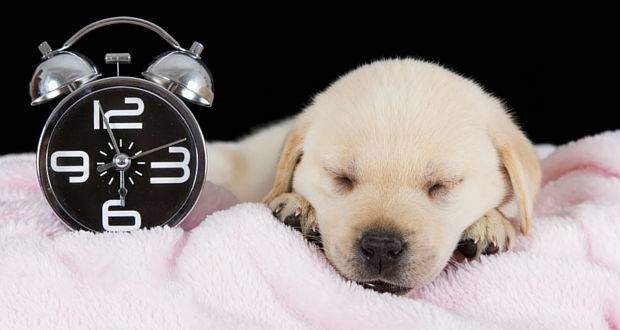
Photo Credit: © Depositphotos.com / AOosthuizen
Ready to create your puppy’s perfect house training schedule? Keeping and following a written schedule may seem excessive, but for very little extra effort, the results are phenomenal.
Here’s a 4-step process you can follow to create a schedule that will work with your puppy’s natural rhythms and your own lifestyle and commitments.
Step 1: Plan Your Puppy’s Feeding Schedule
- 8 to 12 weeks: Feed your puppy four times each day. Try to feed them every four hours at the same time every day. Schedule the first meal of the day based on whatever time you wake up, and adjust the rest of the meals accordingly. A good routine might be to feed at 7:00AM, 11:00AM, 15:00PM and 19:00PM.
- 12 to 26 weeks: Feed your puppy three times each day. As your puppy grows, you can cut back to feedings every six hours: 7:00AM, 13:00PM and 19:00PM.
- 26 weeks and up: You can cut back to two meals each day. Meals should be spaced eight to twelve hours apart. I feed my dogs when I get up at 7:00 and again between 6:00PM and 6:30PM.
Learn how much to feed your Golden Retriever puppy >>
A note on drinking water: Your puppy should always have fresh drinking water available. Because drinking too much or too little water is a sign of health problems, you should monitor how much your pup drinks in a day.
Step 2: Plan Your Puppy’s Exercise, Training, and Play Schedule
Physical activity will encourage your pup’s digestive system to speed up, which affects your puppy’s toileting schedule. Your pup will usually have to go outside after any physical activity.
If you schedule these bouts of playtime, exercise, or training, you will encourage predictable potty times as well. This will make it easier for your puppy’s mind and body to get used to a routine, which will speed up the house training process.
Schedule these activities to fit your schedule, just try to do them at the same time every day while your pup is learning.
Step 3: Design Your House Training Schedule and Keep Notes
In a journal or diary, write down the scheduled details outlined above.
As your day progresses, jot down whenever your puppy uses the toilet, and what activity they were doing beforehand.
Make note of when and where they have accidents in the house, and what activities they were doing before the accident.
Lastly make note of all the times that you brought your dog outside, but they refused to go.
As you get to know your pup, you will start to see pottying patterns that will help you and your puppy avoid mistakes in the future.
Step 4: As Your Puppy Progresses, Extend Time Between Toilet Breaks
As your puppy grows, so do their bowels and bladder, which means they will be able to hold it progressively longer.
If you’re writing down your puppy’s toileting schedule and accidents each day, a pattern will emerge that you can use to lengthen the time between potty breaks.
This will look different for every puppy, but in general, you can start to stretch out the time between bathroom breaks about five minutes every three or four days.
By the time your pup is five or six months old, they should be using the toilet every four hours during the day.
Choosing and Using the Designated Bathroom Spot
To make house training easier for both you and your puppy, you should choose a designated toilet area in your yard.
If you train your pup to use a single spot in your yard, you won’t have to deal with messes everywhere or dead and burnt grass caused by the nitrogen in your pup’s urine.
A single bathroom area is much easier to clean than your whole yard too!
Tips for Choosing Your Puppy’s Toilet Area
- The bathroom area should be away from doors, windows, barbecues, pathways, or play areas.
- The spot should not be so far away that your puppy can’t get to it in time when they really need to go.
- Choose a spot that you can keep clean. An area with tall weeds might seem like a good idea at first, but if you neglect the spot for too long, your dog will refuse to go there.
Taking Your Puppy to The Bathroom Spot
In a perfect world, you would take your puppy to their designated spot, where they would empty themselves quickly and completely on command, and be ready to move on. This can be a reality (most of the time), provided you follow these tips when using the bathroom spot.
Use a cue word. When you bring your pup to their designated bathroom spot, you should always use a cue word that will help them know what’s expected of them. When your pup is young, you should use the cue word whenever they use the toilet in the proper spot. When they are older and understand the word or phrase, you can say it when you want them to do their business, which will lead to faster results.
Keep your puppy on a leash when toileting. You want to make sure your pup is focusing on the task at hand, and the best way to do this is to keep them leashed so they can’t wander.
Don’t speak until your puppy starts to go. Young puppies are easily distracted, and if you’re talking to them, they won’t do their business. Be boring, and just hold the leash until they start to go.
When they start to go, say your cue word quietly, and don’t be distracting. If you get too excited when using your cue word, your puppy might not finish, and will end up emptying inside your home. Say the cue word once, and stand still while they finish up.
When you’re sure they’ve finished up, throw a puppy party. A what? A puppy party is simply a huge and hearty reward – praise, treats, or a few minutes of play — maybe all three if you’re really feeling proud. You may want to keep food rewards to a minimum when your pup is young. Remember, what goes in, must come out.
What if Your Puppy Won’t Go in the Designated Spot
What happens when you bring your puppy out to the designated spot, follow all the rules, and they decide they don’t have to go?
First of all, make sure you’re giving them enough time to do their business. I recommend staying out for up to five minutes.
Do not make this into an exciting exploration session for your pup — don’t walk around or talk to your pup. If your pup responds to your cue word, you can say it every thirty seconds or so.
If they haven’t done their business after five minutes, bring them back inside. But wait, you’re not done yet.
If you’re using a crate for house training, pop your pup in the crate for ten minutes. Then, bring them back to the designated spot and try again.
If you don’t use a crate, watch your puppy very carefully for ten minutes, for signs that they have to go. Do not let them wander unattended — they may decide to sneak off and use your carpet. After ten minutes, head back out to your spot for another go.
Follow these steps as often as you have to, until your pup decides it’s potty time.
Mistakes: How to Prevent Them and What to do When They Happen
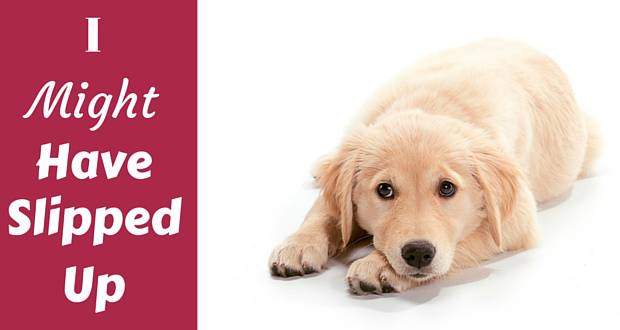
Photo Credit: © Depositphotos.com / kozzi2
You might as well be prepared for mistakes because they will happen. However, if you’re on top of your house training game, they won’t happen as often.
Signs That Your Puppy Has to Go
While not totally foolproof, here are some common signs that your pup needs to go out:
- Restlessness
- Sniffing
- Pacing / circling
- Whining / barking
- Sneaking away to another part of the house. Puppies learn quickly to not get caught.
- Standing near, scratching, or barking at the door
- Acting unusually needy
Most pups will display one or more of these pre-elimination behaviors, but you will have to be observant to figure out your own puppy’s tell-tale signs.
While you’re figuring it out, you should immediately bring your pup to the designated bathroom spot if you notice any of these signs. It’s possible that you’ll have some false alarms, but it’s better to be on the safe side.
What to do When You Catch Your Puppy in the Act
If you catch your pup toileting in the house or other inappropriate spot, simply clap your hands and say, “NO!” clearly and firmly. Do not speak so loudly and harshly that you scare your puppy. You just want to get their attention.
Some puppies will stop what they’re doing mid-stream so that you can carry them or gently lead them to their designated spot. If they don’t stop what they’re doing, your only option is to let them finish up and then clean up the mess.
Look at how the mistake was allowed to happen and try to learn from it. Has there been too much tine between toilet visits? Were you not watching your pup closely enough? Did you allow them to snack between meals so they had a movement outside of the normal routine?
It is really important when house training (or training in general) that you DO NOT scare your puppy. Do not get angry. Do not shout. Do not punish them. If you frighten them when they are caught in the act, they may be afraid to potty in front of you. Not only will this encourage sneaky behavior, but it will make house training much more difficult.
What to Do When You Find a Mess After The Fact
In short, there is nothing you can do aside from gently scolding yourself for not watching your puppy more carefully.
You’ve missed the opportunity to correct your pup, and scolding them at this point will only confuse them — they won’t know you are scolding them for toileting on the floor as the moment has passed and they cannot make the connection.
If you do get angry in any way, they may put on a guilty face to appease you, but really, they will have no idea what your issue is and will only be trying to diffuse your anger.
Don’t be too hard on yourself either — these things happen. Simply clean up the mess and tweak your house training plan so that it doesn’t happen again.
Deep Clean Thoroughly or Your Puppy Will Potty There Again
Dogs tend to urinate in the same spot over and over again. If they make a mistake in your home and it isn’t cleaned up properly, they will revisit that spot for their toileting needs in the future. Obviously that would wreak havoc on your house training efforts.
You must be sure to deep clean after every single accident, removing every trace of urine. Ordinary household cleaners won’t do the trick. You need an enzymatic cleaner that will erase pet odors.
TriNova does a great job getting rid of odors and stains — even if they’ve been festering for awhile. You can use it on carpets, floors, furniture, and pet bedding. Using Nature’s Miracle or a similar product specifically designed for pet odors will guarantee that your puppy doesn’t revisit the scene of the crime for a repeat performance.
What to do During the Night?
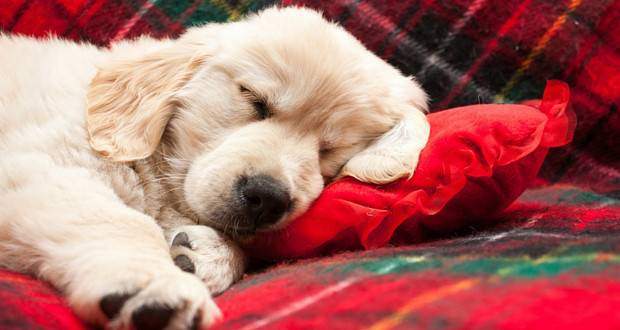
Photo Credit: © Depositphotos.com / amyinlondon
When you first bring your puppy home, they will certainly not be able to last through the night without going out to potty. They may not need to go as frequently as they would during the day, but you should be prepared to take them out at least once.
The good news is that your puppy’s bodily functions will slow down when they’re sleeping, and even pups as young as eight weeks should be able to last four hours or so before they need to go out.
A Night Time Schedule for House Training
First, you should limit your pup’s food and water intake before bedtime. Feed them dinner at least three hours before they go to sleep, and stop giving them water two hours before bed.
Crating your puppy at night makes house training much easier because your puppy is a lot less likely to have an accident in the place where they sleep. Instead, they will often whine or cry to go out.
Before you and your puppy turn in for the night, visit the bathroom spot one last time. Now set an alarm for four hours after their bedtime, when you will have to wake up and take your puppy to their designated bathroom spot. This is probably the least exciting part of raising a puppy, but you must do it.
If your puppy wakes before four hours has passed and is crying to go out, you should get up and take them out. Then you can set the alarm for another four hours when you come back in.
If, after four hours, you awaken to find that your puppy has had an accident, you should set your alarm for a half hour earlier the next night. Repeat this each night until you are waking before your pup has an accident.
After a few days without an accident, you can set your alarm for 20 minutes later than the previous night. Every night after that, you can increase the time by another 20 minutes, provided your pup hasn’t soiled the crate or bedding.
After 3 days of not having a night-time accident, set your alarm for 20 minutes later and increase the time by 20 minutes for each successful night they do not have an accident. Your puppy’s bladder control at night will increase dramatically over the first few weeks, much faster than their daytime control.
If, at any time during house training, you find that they’ve made a mistake in the night, just set the alarm back for a half hour so you can let them out before it happens again the next night.
As with daytime house training, do not punish your dog if they have an accident. Despite your sleepiness, and perhaps even grumpiness, refrain from scolding — it’s entirely counterproductive.
Visiting the Bathroom Spot at Night
Visiting the bathroom spot at night should be relatively no-nonsense. Carry them if they’re little. Lead them gently with the leash if they’re old enough. Head straight to their designated spot, say your chosen cue word, and praise them gently when they finish their business.
Do not reward your puppy with food or play. The last thing you want to do is teach your puppy that play time happens every night at 2 AM. Potty time, and then back to bed. Your pup must know that nighttime is for sleeping.
By the time your pup is 16-weeks-old, they should be able to last the night.
Of course no two pups are the same, and some puppies may sleep through the night at 10 or 15 weeks, but this is rare. In general, your puppy should last seven hours by the time they are 16 weeks old.
Congratulations! The hard part is over.
How to Know When House Training is Finished?
When your puppy has learned to never ever soil in the home, you’ll know all your hard work has paid off. Most dogs will be between 6 and 8 months old, but it really depends on the dog, your methods, and your level of commitment.
Do not judge your dog by a clock or a calendar. When they have proven themselves trustworthy, you will be free to trust them, but remember, a single mistake in the home can cause a huge setback in house training.
A good level to aim for will be your puppy hasn’t even tried to make a mistake for at least 4 weeks. If they do this, you can be fairly sure they’ve learnt the correct habits. Why 4 weeks?
A puppy may not make a mistake for a week, maybe two, you then decide they can be trusted, stop watching them and before you know it they make a mistake on your carpet. Then they could be regularly trying to toilet inside your home again.
Some puppies may seem to forget everything they’ve learned for a day or two. This is normal — their brains are maturing at an incredible rate. Just remember they aren’t being naughty and continue with your house training plan and don’t be discouraged. Your puppy will learn the rules given time.
Conclusion
House Training your puppy is a massive undertaking, but well worth the effort. The more time and energy you put into the task, the more likely that you and your puppy will be successful. To summarize, the key elements of house training are:
- Provide constant supervision so that your puppy doesn’t have a chance to make mistakes in the house.
- Provide lots of praise when your puppy potties in the right spot.
In order to successfully implement the strategies above, you should take time to set up a routine, work with your puppy’s natural inclinations, and carefully plan your dog’s food and water intake.
I hope this comprehensive guide has provided you with all the tools you will need to successfully house train your puppy. While the task may seem daunting, it is a relatively short period in your dog’s life. Put what you’ve read into practice, and you will be rewarded with a fully house-trained puppy in no time at all.
Recommended Comprehensive Training Course

We are very happy to recommend this course, and you can find out why here:
A Complete Guide To House Training From Totally Goldens
For more information on house training, please see our articles linked to below.
This series contains everything a Golden owner needs to know on the subject and should have your puppy or dog toilet trained in the fastest, most effective and painless way for all involved.
We strongly recommend reading through the whole series before you begin, to give yourself the skills and knowledge for the greatest chance at speedy success.


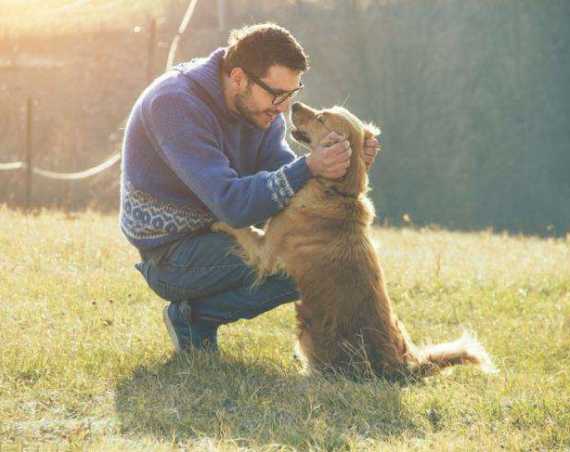

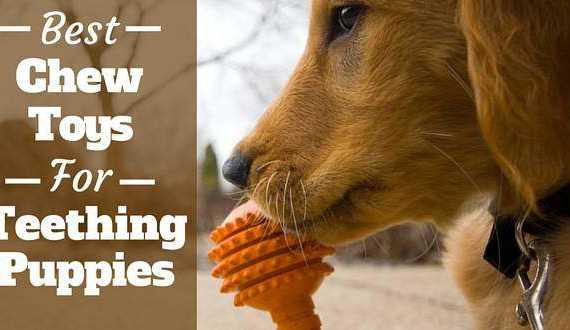
5 Comments
D.Y. Hart
This whole site has been incredibly helpful! We will be owners of a Golden in a few weeks and this site has been very informative for everything from knowing what to feed him, training him, potty training- everything We’ve been researching to make sure we make the transition as smooth as possible for the family. Thank you so much for sharing these great and important details!
Wendy
No problem, I’m glad you find the site useful. Thank you!
Debbi McNamee
This is great. I just got two four month old goldens and they are not house trained. I am glad there are more ways to housetrain than just crate training. Thanks for all the great info.
ompa ompa
you are cute
Estefania
Thanks for an awesome website. All your articles are very useful but me and my partner have a question. We have a 14 week old Goldie, he is very clever and learns new tricks in no time. But potty training it’s becoming a real deal for us. We bring him out many times during the day to excersice and also to try to make him at least pee. He knows go pee in command because we taught him at home with the pads. But he refuses to do anything outside, we even brought the pads outside and ask him to go pee because we know he has to but he doesn’t want to. Except the moment we go back home, then he goes straight to the pad and pee there. I know after the first time he pee or poo outside he will learn to do it on command outside very fast. But he just refuses. I have to admit it’s deep winter where I live and is very cold so I don’t know if that will affect my puppy’s bladder. Please help! Thanks